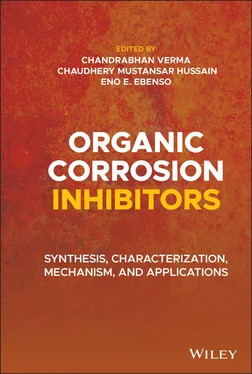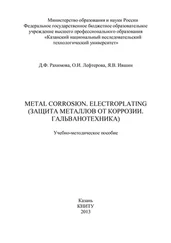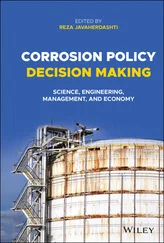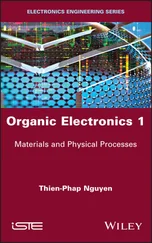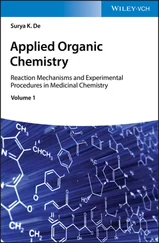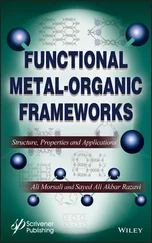It is also localized version of corrosion on a microenvironment level but related to a stagnant electrolyte caused by gasket surfaces, lap joints and holes, crevices under bolts, rivet heads, and surface deposits. To evade and limit this type of corrosion, it is suggested to (i) use of welds instead of bolt/rivet joints, (ii) a design to ensure complete draining, (iii) hydrofuging any interstices, which cannot be removed, and (iv) utilizing solely solid and nonporous seals, etc.
This type of corrosion is also called “bimetallic corrosion” and “dissimilar metal corrosion,” because it occurs due to electrical contact with a more noble metal or maybe a nonmetallic conductor in the electrolyte. The active member of the metallic couple, i.e. less corrosion resistant bears an accelerated corrosion rate, while the noble member is protected by the cathodic effect. The joint between the metals is most corrosion affected. Moving away from this junction, the corrosive attack reduces. As it is already known that each metal has its unique corrosion potential in an electrolyte, the potential difference between the two dissimilar metals causes the less noble metal to corrode. To estimate the corrosion rate conductivity of metal and electrolyte, potential difference of relative anodic and cathodic areas might be accounted [16–18]. To prevent such an attack, the metals should lie close by on the electrochemical series, comparably area of anode should not be too small; if different metals are involved, insulation must be applied; and coatings, paints, and avoiding thread joints are good preventive measures.
1.4.5 Intergranular Corrosion
This corrosion can be referred to as “intercrystalline corrosion”/“interdendritic corrosion” as tensile stress causes it along the grain or crystal boundaries. It might also be known as “intergranular stress corrosion cracking” and “intergranular corrosion cracking.” These corrosive attack prefers interdendritic paths. A microstructure examination using a microscope is needed for recognizing this degradation; however, at times, it is recognizable with eyes as in weld decay. The composition’s local differences like coring in alloy castings lead to this type of corrosion. The mechanism includes precipitation in grain boundaries like in the case of precipitating chromium carbides in steel. Intermetallic segregation at grain boundaries in aluminum is called “exfoliation.” This corrosion type might be prevented and controlled by using mild steel, low carbon type like using post‐weld treatment, etc.
1.4.6 Stress‐Corrosion Cracking (SCC)
Such a cracking occurs by the simultaneous action of a corrodent and sustained tensile stress. This bars the corrosion‐less sections, intercrystalline or trans‐crystalline corrosion, which might destroy an alloy without any stress. It is accompanied with hydrogen embrittlement. It might be a conjoint action of a susceptible material, a specific chemical species, and tensile stress. Sedriks and Turnbull reviewed the standard SCC testing [19–20]. Time‐consuming techniques, bulky specimens, and expensiveness limit the usage of SCC monitoring techniques. Stress corrosion cracking might be prevented by avoiding chemical species that causes it, controlling hardness and stress, using un‐crackable materials specific to environment and temperature/potential control of operation.
On steel, aluminum, aircraft structures in humidity, flanges, beverage cans, gaskets, and weld zones, this type of corrosion can be detected. Irregular hairlines, sometimes corrosion products filaments present below coatings of paint, rubber, lacquer, tin, silver, enamel, and paper, develop. Material is not lost significantly, but the surface deteriorates. Copper, stainless steel, and titanium alloys are unsusceptible to this attack.
Rapidly flowing electrolyte and turbulence cause erosion of the metal. The main culprits for turbulence are the pits within a pipeline. Turbulence finally causes a pipeline to have leakage. The velocity of the flowing electrolyte and the physical action of it moving against the surface causes metallic loss at an accelerated rate. Erosion is common occurrence in constriction areas like pump impellers and inlet ends. Erosion can be tackled by less turbulent fluid movement, low velocity of flow, using corrosion resistant pipeline materials, inhibitors, etc.
A slight oscillatory slip between two surfaces in contact causes fretting corrosion. Bolted/riveted parts are made such that they do not slip or oscillate, which fails in the presence of fluctuation of pressure and vibration. Fretting can be prevented by regular inspection and maintenance of the lubrication.
At the elongated grain boundaries, the corrosion products present cause the metal to be forced away from the material and form layer‐like look, and this is called exfoliation. Also known as lamellar, layered, and stratified corrosion, it proceeds along selected subsurfaces. If the grain boundary attack is severe, it is visible; otherwise a microscope conducts the microstructure examination. Alloys of aluminum are most susceptible to exfoliation. This can be controlled using coatings, heat treatment to control precipitate distribution, and exfoliation‐resistant aluminum alloy.
Dealloying is selective corrosion of solid solution of alloy also known as leaching/selective attack/parting. Dealloying can be manifested in various categories like decobaltification (selective leaching of cobalt from cobalt‐base alloys), decarburization (selective loss of carbon from the surface layer), dezincification (selective leaching of zinc from zinc‐containing alloys), denickelification (selective leaching of nickel from nickel‐containing alloys), and graphitic corrosion (gray cast iron in which the metallic constituents are selectively leached). Dealloying might be prevented by selecting more resistant alloys, controlling the selective leaching, sacrificial anode/cathodic protection.
Corrosion and cyclic stress when occur simultaneously result in cracks. This is corrosion fatigue. Rapidly fluctuating stress below the tensile strength usually are causative agents. The metallic fatigue strength decreases in corrosive electrolyte. It can be prevented by using high‐performance alloys resistant to corrosion fatigue and by using coatings and inhibitors delaying the crack initiation.
1.5 Common Methods of Corrosion Control
Corrosion control is applying the principles of engineering to limit corrosion economically. Each preventive measure bears its own complexities and specificity. Basically, the idea is to detect the mechanism and causative agents of the degradation and reduce them or completely prevent them from occurring. Let us have a look on some of them as given below.
1.5.1 Materials Selection and Design
There is no all‐noble and completely corrosion‐resistant metal, but a careful selection might increase the longevity of the metal component. Factors influencing the materials selection are resistance to degradation, test data and design availability, cost, mechanical properties, availability, compatibility with other components, maintainability, life expectancy, appearance, and reliability. Availability, inexpensiveness, and easy fabrication make carbon steel a favorable material for selection [21]. In the petrochemical plants, highly corrosive catalysts and solvents are usually encountered, so stainless steel is best option [22]. Duplex stainless steels are used in pressure vessels, storage tanks, and heat exchangers owing to their good mechanical properties, high resistance to chloride stress corrosion cracking, good erosion and wear resistance, and low thermal expansion [23]. For seawater service, duplex stainless steels of higher molybdenum content (e.g. Zeron 100) have been developed [24]. Appropriate system design is crucial for efficient corrosion control. Numerous factors like materials selection, geometry for drainage, process and construction parameters, avoiding or sealing of crevices, avoidance or electrical separation of dissimilar metals, operating lifetime, and maintenance and inspection requirements are involved.
Читать дальше
